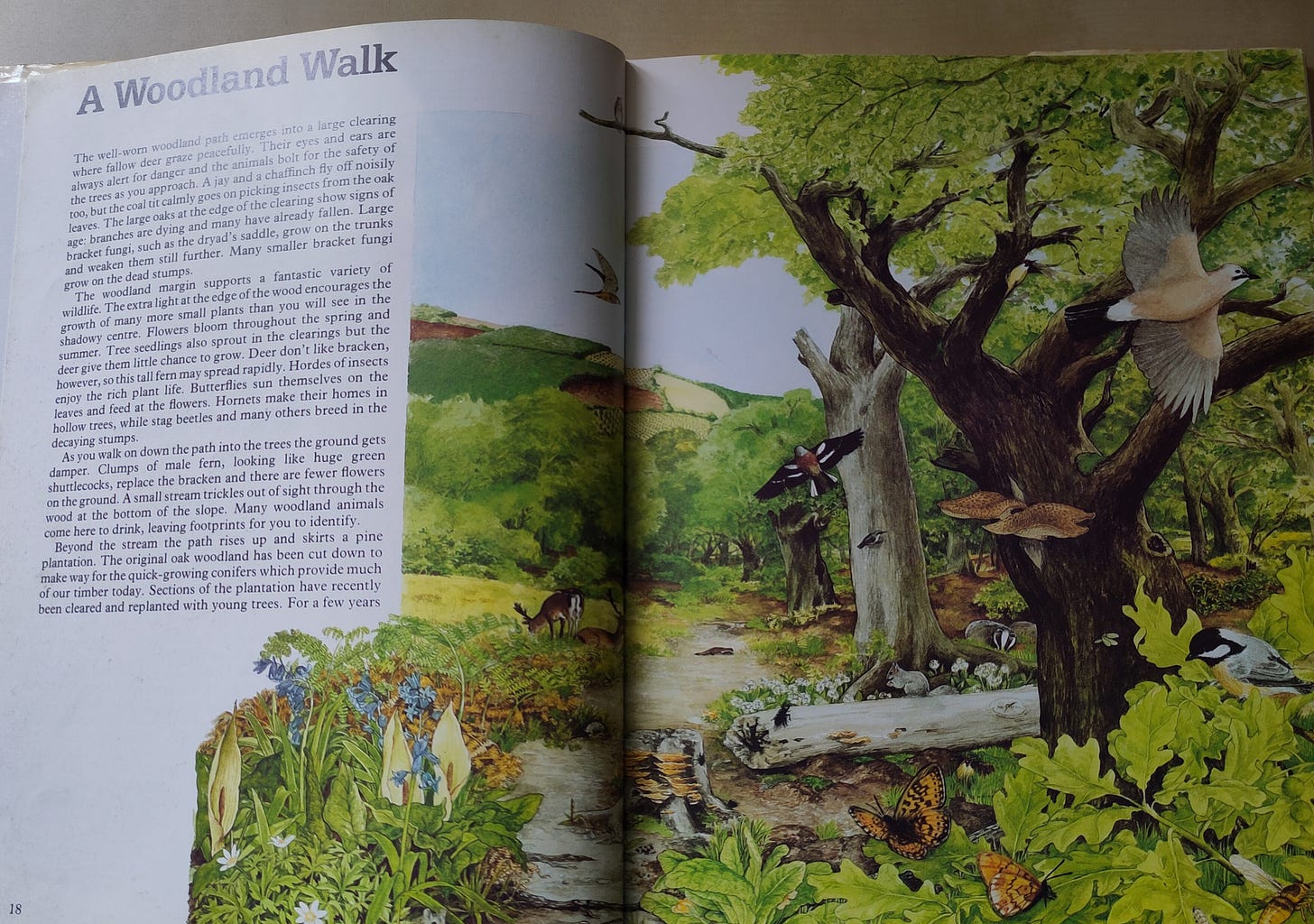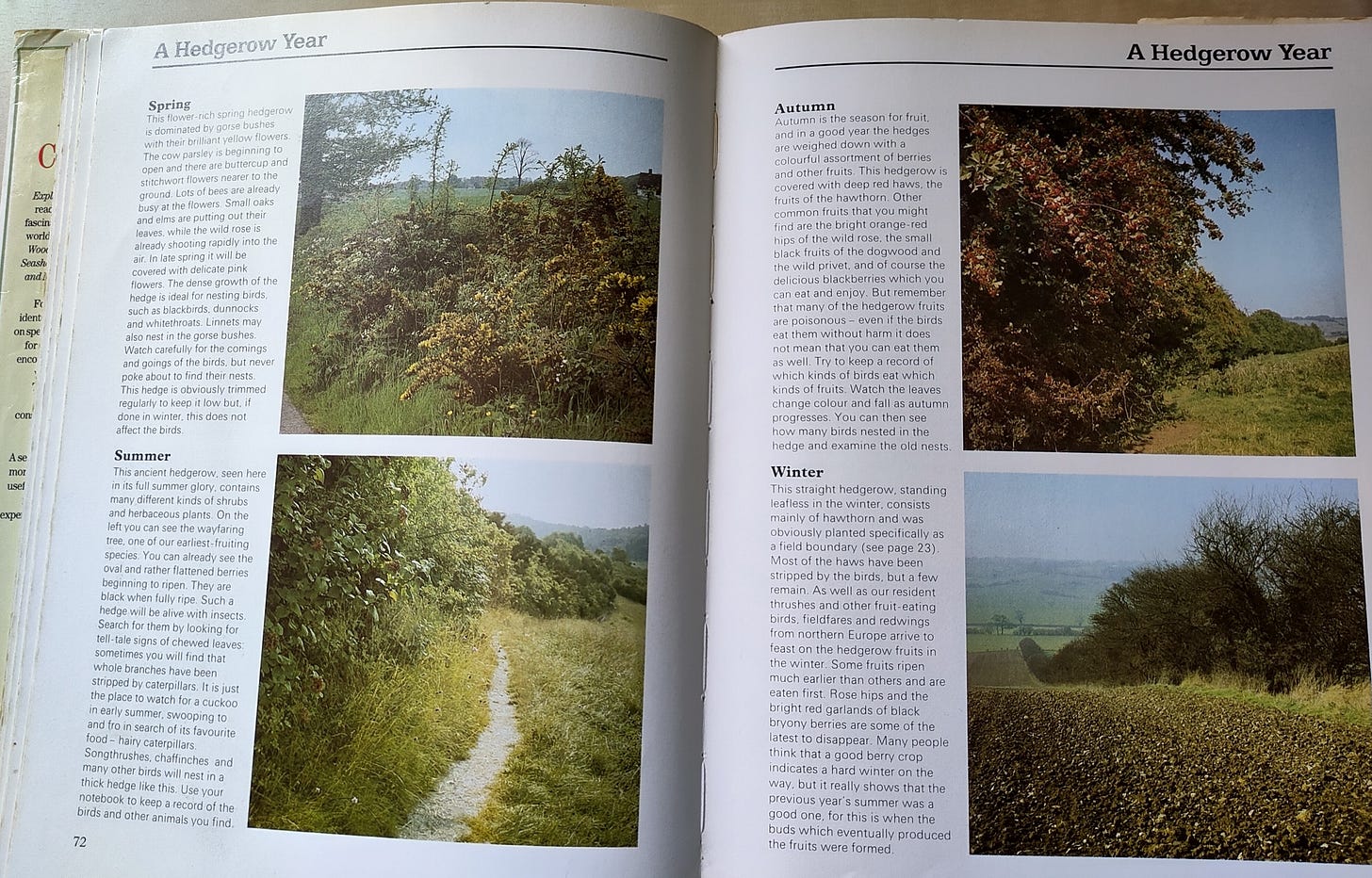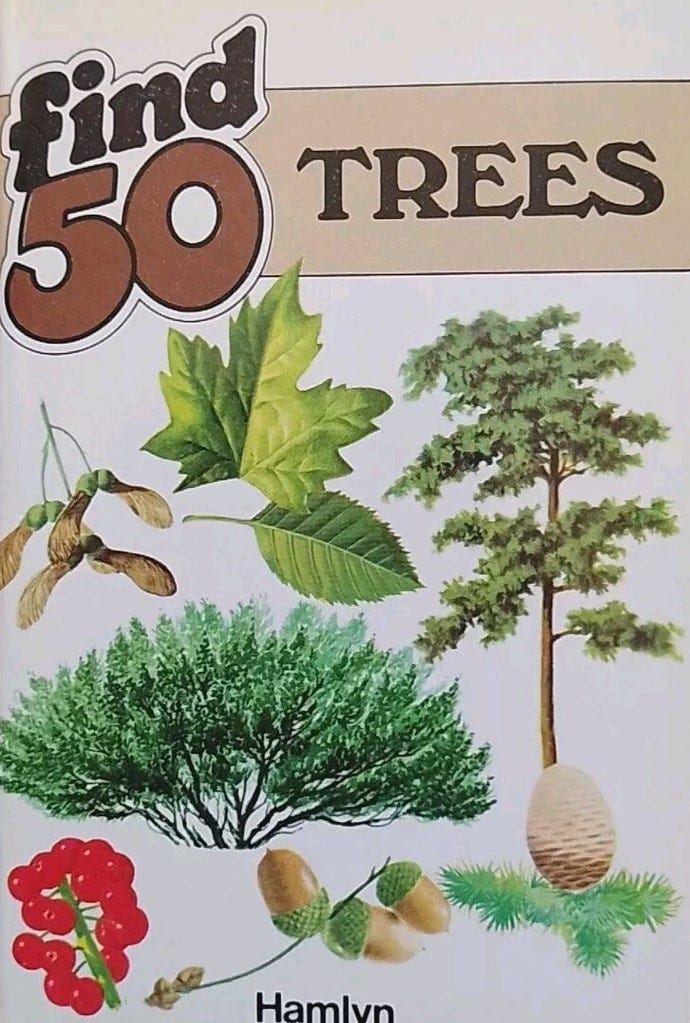This series revisiting my favourite childhood books has so far focused on fiction, those stories that left a mark on my imagination in a whole range of different ways. In this post I want to look at a very different book, one that helped me make sense of the world around me in a much more literal way.
‘Exploring the Countryside’ is one of only two non-fiction books that I’ve kept since childhood. It was published in 1987 and may well have been a birthday or Christmas present in that year. At Primary School I wanted to be two things – a writer and a naturalist. Once I reached Secondary School, which more or less coincided with a move from Cumbria to West Yorkshire, the naturalist part was abandoned in favour of arts subjects – history, English Literature, R.E. and so on – but today I do write about nature and place as part of my day job and I hope that my younger self would approve.1
But back to the book. ‘Exploring the Countryside’ is a properly informative book that doesn’t talk down to its young readers. I loved it, and it became a much consulted volume. More than any other book I’ve written about in this series, the physicality of it was important, it’s beautifully illustrated by a team of people and includes plenty of identification guides, diagrams, photographs and step by step projects. I spent many hours pouring over it.

‘Exploring the Countryside’ takes six key habitats – Woodlands, Fields and Hedgerows, Seashore, Rivers and Ponds, Mountains and Moorlands, and Parks and Gardens – and covers their landscape features and wildlife. There are suggestions for experiments and observation tips, as well as plenty of definitions and other information to help children understand what they are seeing.
Growing up in Cumbria, my immediate village surroundings included the local lanes and hedgerows, as well as farmland. These were the bounds of most of my exploring, from the lonnin (lane) at the back of our housing estate to the hedgerows round the playing field and the pavement side flowers along the walk to school. ‘Exploring the Countryside’ had plenty to say about these kinds of places, as well as ones that felt less familiar, which was the thing that made it a well worn volume.

The book helpfully provided a kit list for naturalists – the notebooks I could manage with ease as even then a small A6 lined school vocab style book was usually to hand but some of the other items were more of a challenge. I only had a bright yellow 110mm camera and a shaky hand, no binoculars or hand lens, but I did acquire a robust child’s two way microscope somewhere along the way. ID guides were also a problem, I suspect Michael Chinery did not have the Hamlyn Find 50 books in mind, but they were all I had and were actually surprisingly good when it came to making on the spot identifications.2
Really though, the most lasting lesson from all the more practical aspects of the book was the need to keep a notebook, to observe and record what I saw and heard, to look for the way things change with the seasons. It also encouraged me to notice and think about the impact of human behaviour on wildlife, paving the way for other books I would read later including ‘The Animals of Farthing Wood’ by Colin Dann and Richard Adams’ classic ‘Watership Down’.
The book emphasised two crucial ideas – the need to follow the Country Code and the importance of conservation. The proposition that people and nature need to coexist seems to have become a contemporary battleground but Chinery was crystal clear in 1987:
We need houses, roads and factories, but we also need open spaces and wildlife.
and
It is certain that, in the long run, we could not survive without the natural world around us.
‘Exploring the Countryside’ was a book that expanded my understanding in other ways that often didn’t become obvious until much later. For example, the historical background running through the book helps to make it clear that much of what we think of as natural landscapes have in fact been shaped by farming and other human activity as much as they have by geological processes. I can see a direct line between reading ‘Exploring the Countryside’ and coming to writers like W.G. Hoskins at university.
Michael Chinery’s book encouraged both close looking and understanding the bigger picture – useful lessons when considering not just nature or landscape, but much more besides.
The other non-fiction book I’ve kept is ‘Handbook of Life in Bible Times’ by J.A. Thompson. I can date this one incredibly precisely because it was a Confirmation present, so I was given it in Holy Week 1993 when I was 12. It’s a fascinating volume, full of history and archaeology, and one which might have helped to start an interest in Church History that continued right through to my History degree and beyond.
I loved the Find 50 series. It appealed to my fondness for ticking things off and completing worksheets. I was very much that kind of child.







I had the Hamlyn Guide to Birds from about age 9 and that was much loved and leafed through. A grandmotherly friend had Keble Martins Wild Flower book with its beautiful paintings of native flowers. She let me look in it, again when I was about nine - what a special invitation that opened up the wonderful world of flowers to me.
Mine was The AA Book of the Countryside!